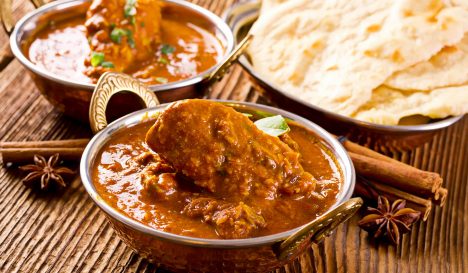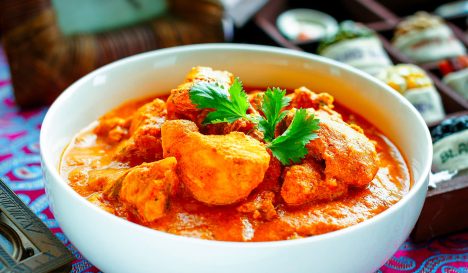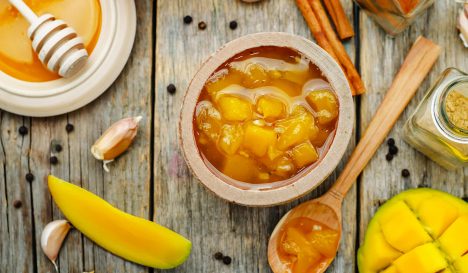Papadum
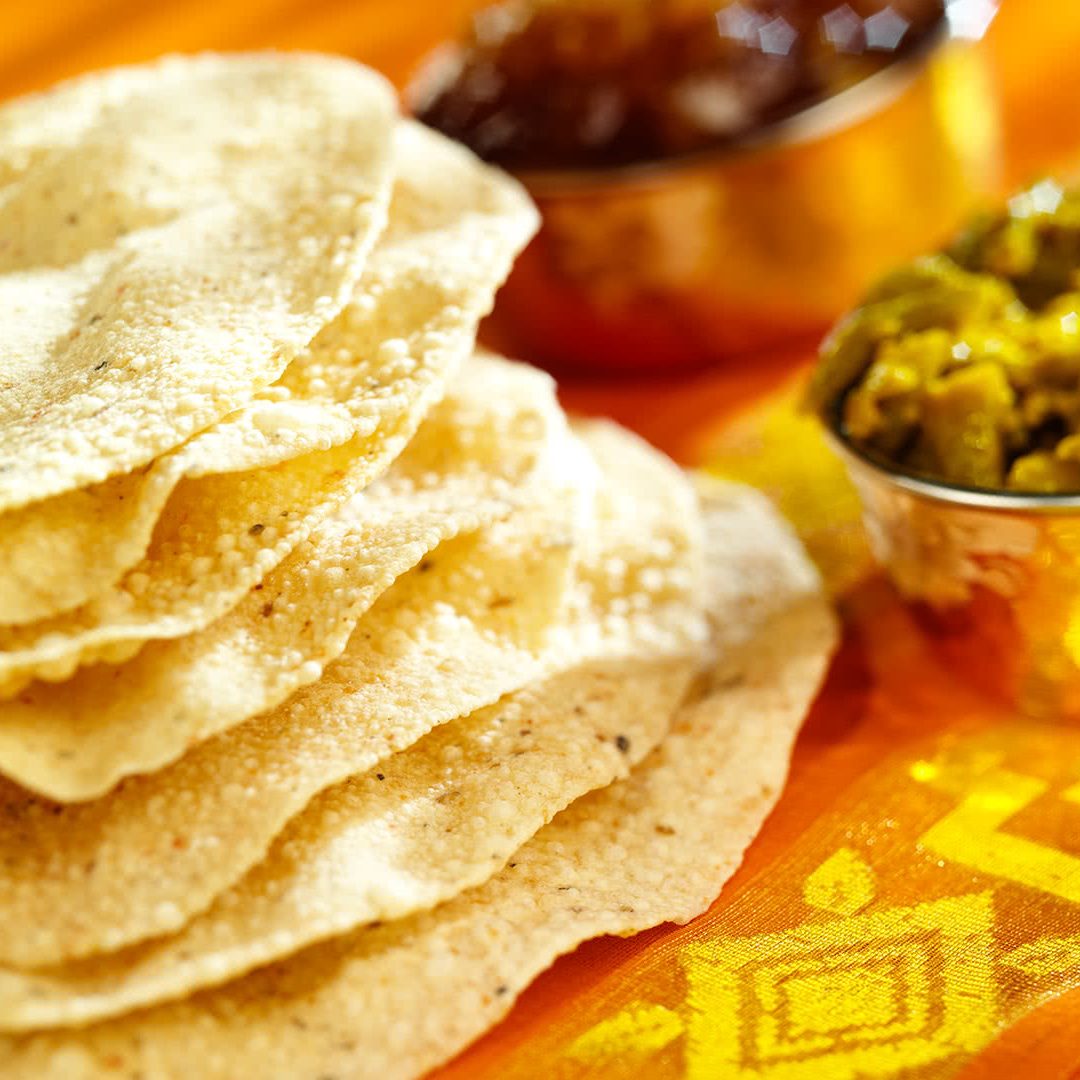
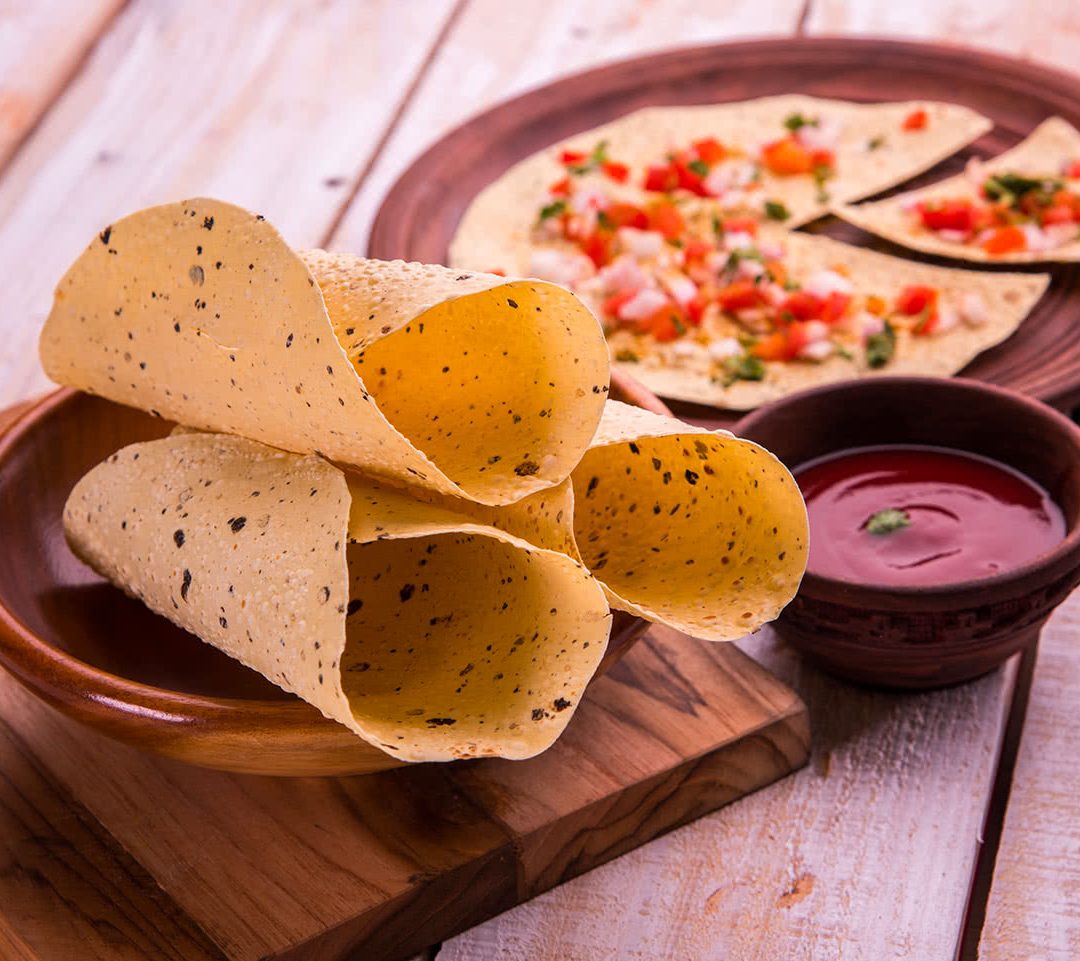
Papadum
-
Kitchen Indian cuisine
-
Allergens Depends on the selected ingredients
-
Basis Dough / batter
-
For who Vegetarians
-
Spiciness pepper pepper pepper
The dish
The papadum is a fried Indian cracker made from lentil, chickpea, rice or black gram flour. Papadums are served as a side dish, snack or appetiser. Sometimes they have a topping, but they are more often served with a selection of dipping sauces.
Papadums are the ubiquitous side dish for South Indian meals, while in the north of India they are served as a snack or appetiser, often with a cup of tea. In the north, this cracker is also called papad, and there are different varieties depending on the flour used and the spice/herb combination. These include:
- Urad papad: Black gram flour and asafoetida (AKA devil’s dung – a perennial herb native to Iran but cultivated in India).
- Kothimbir papad: Black gram flour, coriander and green chilli peppers.
- Potato papad: Sago and potato.
- Black pepper papadum: Chickpea flour and coarsely ground black pepper.
- Khichiya papad: Rice flour and sesame seeds.
Did you know?
Papadums are also sometimes covered with toppings – just like a pizza. On a masala papadum, for example, you’ll find red onion, tomato, chilli powder, coriander leaf and crumbled sev, a crispy salty noodle snack made from chickpea flour.
Preparation
The preparation of papadums is similar to that of Indian prawn crackers. Up to two days in advance, a dough is made from the chosen flour; chickpea, lentil, rice or black gram flour, which is mixed with spices, baking soda, salt and water. Small balls are rolled out thinly and dried in direct sunlight or in a special drying oven. In the sun, this drying process can take up to forty-eight hours.
The dried dough is fried in hot oil at 190°C, transforming from a small disc into a large, wonderfully airy and crunchy papadum. They can also be roasted directly over a gas flame or under a hot grill. Deep-fried papadums can be left to drain on kitchen paper before serving.
How to eat
The faster you eat the papadums after baking, the tastier they are. Dip them in a selection of sauces – mango chutney, mint yoghurt sauce and lime pickle are a common combination in Indian restaurants.
Attention!
Rather than eating your papadums as an appetiser, try them as a side dish to a chicken Madras or a chicken tikka masala. Sprinkle pieces of papadum over the dish to add extra crunch.

